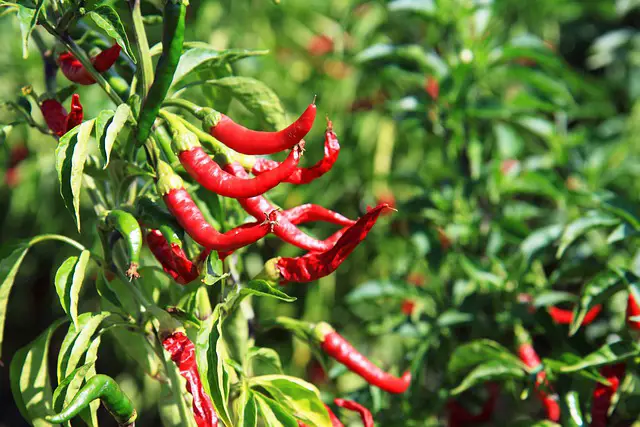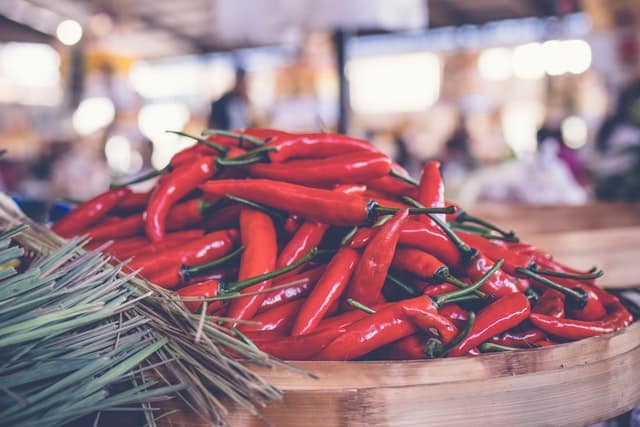Why are my peppers turning black is a frequently searched questions. We, gardeners, tend to get concerned when we notice something unusual in the garden. Fortunately, if your peppers turn black or dark purple, it happens more often than not due to nature.
A backyard garden wouldn’t be complete without peppers. Peppers (yes, they’re fruits) add a beautiful splash of color to garden beds with their colorful exteriors. However, the sight of black pepper in the garden will shock and confuse many gardeners.
Where does the black color come from? Is it normal for peppers to turn black? It’s totally okay for such concerns to flood your mind. This post will help you figure out this vexing subject and offer interesting facts about pepper plants.
So, why are my peppers turning black? Let us find out!
Why Are My Peppers Turning Black?

Ripening peppers turn black (or dark purple). These dark purple or black discolorations are common in only a few pepper varieties, including jalapenos and bell peppers. A blossom end should not cause concern unless it has tiny black spots or turns black and soft, as it indicates disease. Sunlight or cold temperatures can also cause the skin to turn black.
In most cases, peppers turn black during ripening. Rather than changing from green to red, some peppers begin out green, then turn black, and finally turn red, orange, or yellow.
The ripening process usually causes peppers to turn black, but they can also turn black for other reasons. There is likely another cause for your peppers turning black if they don’t show any signs of changing.
A natural process occurs in peppers, and some peppers are more susceptible to it. Peppers whose skins are partially purple or black but otherwise appear healthy are safe to eat, not affecting the flavor. If your peppers have black spots or are turning squishy and soft, you should be concerned.
1. Change In Environment
Peppers flourish in warm weather. Peppers can be adversely affected by cooler weather as the weather cools down late in the growing season. A drastic drop in temperature can cause the blackening of peppers growing on the plant. While this can be an eyesore, it does not affect the taste of the pepper.
You can prevent this type of blackening in several ways. An excellent way to avoid it is to harvest the peppers on time before the temperatures drop too low.
Weather forecasts are essential to keep an eye on. If temperatures drop below 30° F (16.8° C) within a few days, harvest peppers as soon as possible before they turn black.
As an alternative, you can cover your pepper plants with a frost protection blanket if you do not want to harvest your peppers yet. When covered in this material, you will also protect your pepper plants from wind, snow, and frost.
Although frost protection blankets allow your plants to breathe, they provide better insulation. Instead of using cardboard boxes or plastic containers to cover your pepper plants, you can use just about anything.
2. Certain Nutrients Are Deficient

It can also signify a nutrient deficiency if your peppers are turning black. Pepper plants have a much greater need for phosphorus during the flowering and fruiting stages of their lives. Pepper plants can develop black fruit if they don’t receive enough phosphorus.
Your pepper plants can also suffer from a variety of other unwanted side effects if they do not receive enough phosphorus. In addition to decreased fruit quality and disease resistance, poor stem and root development is also a side effect. Consequently, the blackening of your peppers may be an indicator of greater problems.
3. Pathogens That Affect Plants

Several plant diseases attack peppers causing blackening of peppers as they are easily susceptible to pathogens. Black withered spots on peppers caused by blossom end rot, for instance, enlarge over time. Calcium deficiency is most commonly responsible for this.
By consistently watering your pepper plants, you can prevent blossom end rot from occurring. You can also add a crushed calcium tablet to your water to help prevent blossom rot by boosting calcium to the pepper plant.
4. Excess Exposure to the Sun
Certain pepper varieties tend to turn black when they are exposed to direct sunlight. This isn’t a problem, but instead a way of protecting themselves against the sun’s ultraviolet rays. Sometimes, the pepper leaves may also have purple marks, which should not be a cause for concern. If your peppers are not suffering from sunscald, they’re perfectly okay and should be edible.
5. Chemicals
Improper use of chemicals such as pesticides and herbicides can cause peppers to turn black. Applying the chemicals to the pepper in large amounts over time may also cause discoloration in the plant.
Excessive use of fertilizers on your pepper can cause a chemical burn, causing the plant to blacken. Besides, using tap water that contains chlorine and other chemicals for an extended period can cause the pepper plant to turn black.
6. Bacterial Infections
When bacteria infect the pepper plant, they damage its tissues. Not only that, they release toxic substances that cause the plant’s cell wall to break down. Eventually, the plant cells will die, causing the pepper to blacken. Some bacteria also spread to the parts of the pepper that allow the free flow of nutrients and water. As a result, the pepper fruit and leaves will gradually turn black.
Black Peppers Are A Problem When They Turn Black
If your peppers are getting little black spots or becoming softer and black, that isn’t normal. Black, weak spots on the pepper can indicate infection with bacteria or rotting from insect bites. If the bottom tip of your peppers is black and soft, you probably have blossom end rot.
A lack of calcium leads to blossoming end rot, essential for fruit development. Many gardens have adequate calcium levels, however. A pepper plant constantly wilting from drought is most likely to develop blossom end rot. A plant can’t send calcium to growing peppers when the soil is dry because the roots can’t absorb calcium.
More on plant care: Alocasia Black Velvet Leaves Curling
Summary
Your peppers may have never been exposed to cold, do not show any signs of nutritional deficiencies, and are still black. What does this mean? Black peppers are known to grow on certain pepper plants.
At the very least, this likely means your peppers are naturally black. However, it does not determine how spicy they are despite their obscure color. Some black pepper can be scorching, while others are comparatively mild.
Frequently Asked Questions
Why Are My Peppers Turning Black On The Bottom?
Blossom end rot can cause dark spots to appear on peppers’ bottoms. There is no disease associated with it. Watering unevenly (wet-dry cycles), too much nitrogen or damage to the roots cause the problem. The calcium deficit can contribute to it. Peppers can be eaten with BER-just cut the bottom off.
Why Do My Jalapeno Peppers Turn Black?
Jalapeno plants ripen quickly when there is a lot of moisture in the air around them, usually caused by excessive watering or rain. Water the soil at the plant’s base only to prevent black rot by keeping the fruit dry when watering.
When A Pepper Has Blossom End Rot, Can You Eat It?
When Tomatoes or Peppers Have Blossom End Rot, Can You Eat Them? It is not a bacterial issue, so your peppers and tomatoes do not become inedible due to blossom end rot. Even though fruits with blossom end rot appear to be ruined, you can cut away the affected areas and eat the remaining fruit.
Can You Eat Peppers With Black Spots?
The black colour of peppers is a sign of spoilage; therefore, you should avoid eating such peppers. Green, yellow and red are typical pepper colours, and if you notice your chillies having black or brown blotches, throw out the peppers and treat your plants immediately

Hey, I’m Lisa and I’ve been an avid gardener for over 30 years. I love writing, talking and living in the garden! Feel free to connect with me on my socials below

